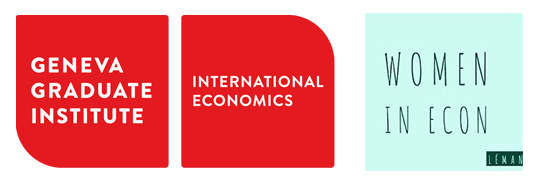The Women in Economics Léman Initiative is a joint initiative from the Graduate Institute, the University of Geneva, the University of Lausanne and EPFL to create a network of PhD students, postdocs, professors and other researchers. The main goal is to kick-off a broad conversation about how systemic biases (based on gender, ethnicity, seniority, etc.) affect us as a community of economic researchers and professionals. If you would like to know more about what brought us to outline the Guidelines for an inclusive Economics Department, you can read the Women in Economics Léman manifesto, as well as our background research document.

The objective of these guidelines is to generate a collaborative atmosphere where everybody, regardless of gender, ethnicity, sex, age, sexual orientation, ability, seniority and socioeconomic background feels a sense of belonging and respect. Such a space has the distinct feature of not tolerating diversity but embracing it through affirmation and empathy. These guidelines do not address recent situations within the department. They are not a criticism of current behaviors but a necessary and long overdue step to create a systematic tool for the future, especially as new faculty and students will leave and join the department.
These guidelines focus on three priority targets: (i) fostering diversity among faculty, (ii) facilitating constructive student-faculty interactions, and (iii) promoting a supportive, inclusive and collegial seminar culture.
Target I: Fostering diversity among faculty
Having a diverse set of backgrounds among faculty helps to create a sense of belonging and thereby greater empowerment and self-confidence. Not only faculty members belonging to under-represented groups should be role models, any professor can be a role model, an ally and an agent of change.
Reflect on your own subconscious biases. Sometimes it can be hard to recognize bias. Try to think: would you judge the value of the experience or work in the same fashion if the candidate had a different gender or did belong to an under-represented group? Take Harvard’s implicit association test for gender and career. If you wish to take more IAT (on age, race, disability, etc.) click here.
Push back against subconscious biases: Do not assume that women and people from under-represented groups are “diversity hires” or “diversity admits”. They had to climb a higher hill to get here.
- Call out biases when you notice them, particularly in interviews and admissions settings.
- Push back against the scarcity argument, often used to justify the non-inclusive status quo
- Avoid groupthink in candidate assessment. Collect independent candidates’ assessment rather than agreeing on a common rating
- Be conscious of gendered language in recommendation letters
- Set objective evaluation criteria ahead of time and hold each other accountable
- Do not base your hiring decisions on personal information such as age, fertility, marital status, or family background of candidates



